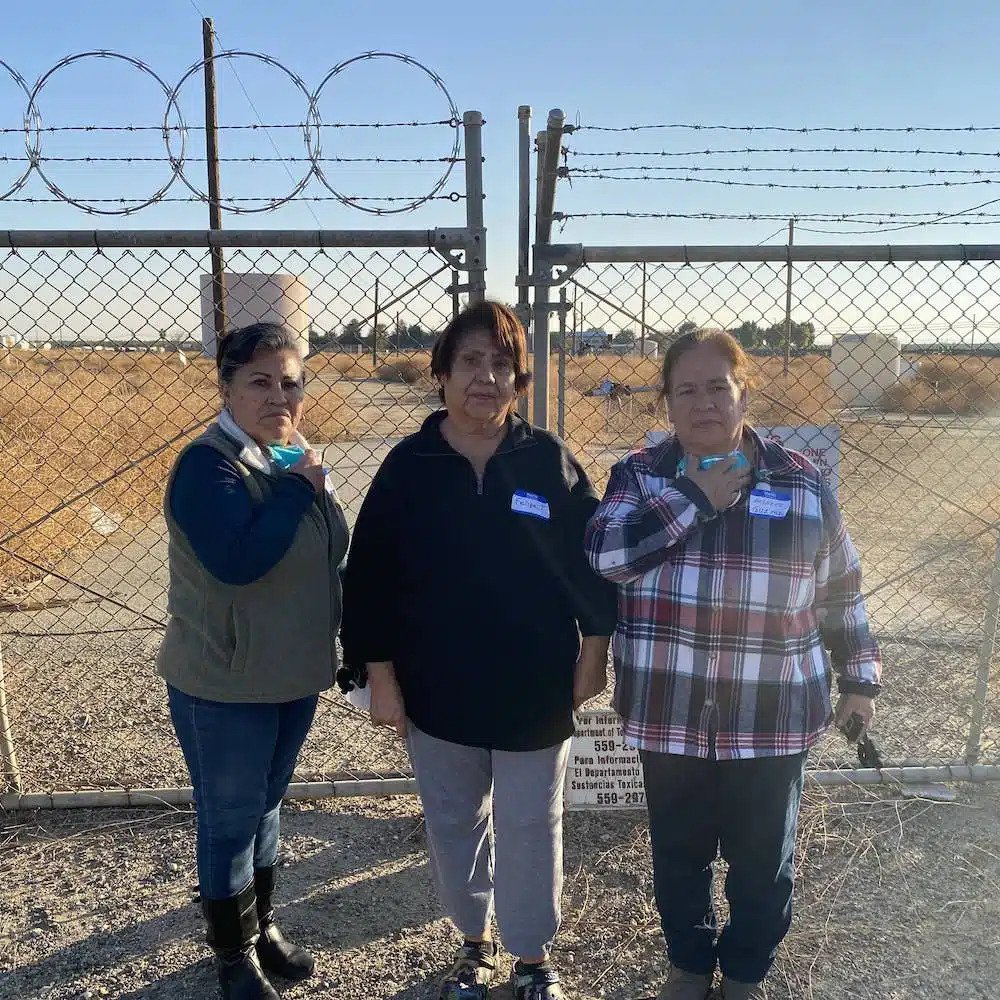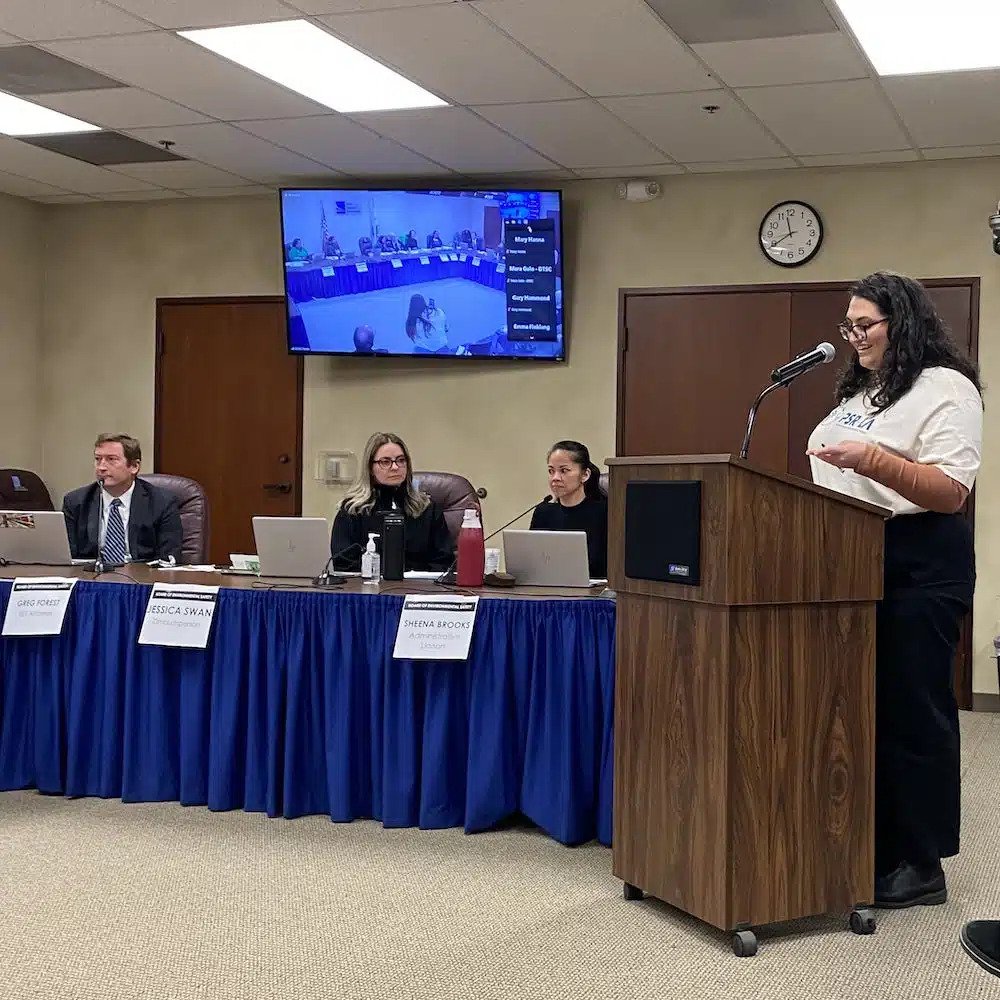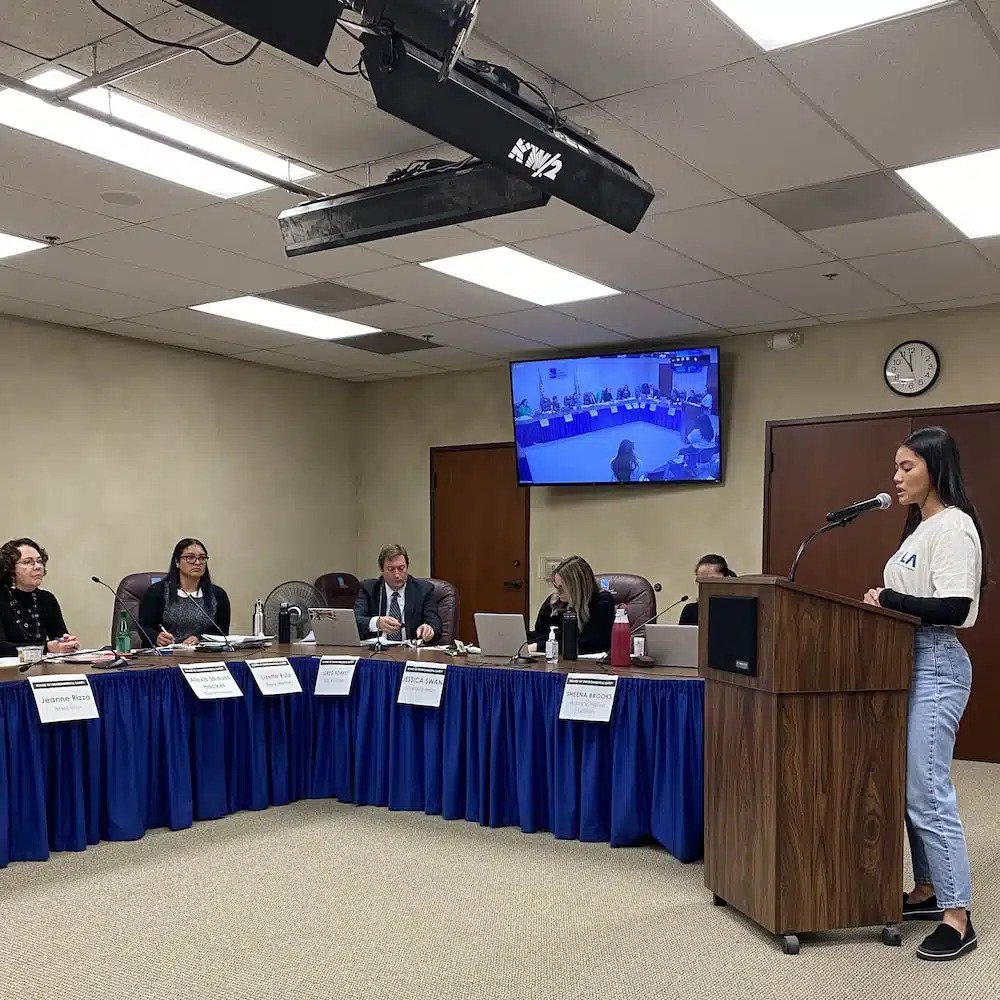Toxics & Solutions Tour: The Intersectionality of Contamination Issues
In California, toxic chemical contamination has long affected local communities. Whether living near industrial sites, waste or agriculture facilities, or contaminated soil and water from decades of careless industrial practices and negligence, these communities have been burdened with a variety of health and environmental problems. To better understand the systemic issues and the disproportionate impacts on low-income communities and communities of color, PSR-LA embarked on a second Toxics & Solutions tour, this time in California’s Central Valley.
Touring the Central Valley
Following the successful July 11th Toxics & Solutions Los Angeles Tour, PSR-LA coordinated a tour of sites impacting Central Valley families in partnership with the Center on Race, Poverty & the Environment (CRPE) and Californians for a Healthy and Green Economy (CHANGE). In addition to building common ground with local LA environmental justice groups, a tour of the Central Valley offered the chance to explore the intersectionality of legacy contamination, which is especially important as we see hazardous waste produced in Los Angeles and transported out of our communities and into another. The tour was also an opportunity to demonstrate the strength and power communities across California have in the fight for environmental justice, build solidarity and power among Los Angeles and Central Valley-based communities, learn new strategies, and demonstrate the systemic regulatory failures at the Department of Toxic Substances Control (DTSC), which has neglected our communities for far too long.
Among the tour participants were community members, leaders, and groups from Los Angeles and the Central Valley, as well as representatives and staff from the DTSC and the Board of Environmental Safety (BES). The goals of the tour included:
Highlighting the stories and experiences of impacted residents in the Central Valley
Amplifying community-driven solutions while promoting opportunities for communities to learn from each others’ experiences
Building alignment with DTSC and BES on regulatory gaps, barriers, challenges, and solutions
A Toxic History
Tour participants visited sites in Arvin, Delano, Shafter, and Buttonwillow — cities and incorporated communities within the Central Valley. Community leaders, organizations, and residents shared impactful testimonies and presentations with the group at large about experiences fighting toxic contamination in their respective communities. Participants recounted their struggles in getting information about toxic sites in their communities, how they were left in the dark about health impacts, and the tedious battle to have their concerns addressed meaningfully, all while the systems in place continued to benefit polluting industries and real estate developers. Parallels between these stories served as evidence of systemic regulatory failures and environmental racism that harm communities of color and low-income communities.
An Opportunity for Public Comment
During the tour, participants had the freedom to speak directly to the BES representatives on their grievances and needs, but the opportunity to make public comments the following day was equally important. During the meeting in Bakersfield, advocates and community members from Los Angeles and across the Central Valley spoke for the public record about their expectations and needs from the State and the Board. Public comments are important as it allows community members, groups, and organizations like PSR-LA and CHANGE to communicate transparently and objectively with agencies. At the November 15th BES meeting, we were able to comment on their shortcomings and provide guidance on what we thought should be prioritized.
Together, PSR-LA, CHANGE, and tour participants demanded that the BES:
Provide strong oversight to DTSC
Ensure communities are part of the process to develop DTSC performance metrics
Maintain the Board’s independence from DTSC, and
Hold a site-specific public hearing
Moving Forward
The tour and the BES meeting provided an energizing opportunity for advocates and community members from Los Angeles and Central Valley to come together in solidarity, build relationships, learn from one another, and work together for environmental justice. Though each community and region is unique, systemic forces affect communities throughout the state. While DTSC and the BES have a long road ahead, PSR-LA and CHANGE will use the momentum created by this tour to monitor DTSC’s progress as they build their accountability metrics centered on environmental justice. With our allies, we will continue to build on the work done and provide more organizations with a space to connect, learn from one another, identify shared goals, and advocate together for policies that prioritize communities’ health and effective regulatory oversight. Together, our voices are stronger, and together, we can address regulatory gaps, barriers, and challenges and move towards safer alternatives and health protection measures that address legacy contamination issues.
-
The Brown & Bryant Arvin Plant served as an agricultural chemical mixing facility from 1960 to 1989. As a result of spills and improper disposal of toxic chemicals, the facility contaminated soil and groundwater beneath the site. The site is a Superfund Site managed by the Environmental Protection Agency (EPA), and site investigations and cleanup are ongoing. Presenters included representatives from the Committee for a Better Arvin and CRPE.
-
In Downtown Delano, a toxic plume of trichloroethylene (TCE) and tetrachloroethylene (PCE) developed due to contamination from several dry cleaners. This plume extends beneath several blocks of downtown. Earlier this year, DTSC began a cleanup effort and installation of two treatment systems that filter carcinogenic contaminants out of the water and wet soils. While questions remain about how effective this effort will be, DTSC’s recent collaboration at this site with local community groups and advocates was highlighted. Presenters included representatives from Delano Guardians, Delano Community Advisory Group, and CRPE.
-
Brown & Bryant Shafter Plant was a pesticide plant from 1955 to 1989. The site blended, formulated, and packaged agricultural chemicals, including pesticides, fumigants, and fertilizers. During that time, nearly all of the commonly utilized fumigants and pesticides were released into the soil, including DDT and over 50 other chemicals. DTSC manages the site, but residents have received very little information about the status and progress of the contamination. Residents also remain concerned due to neglect and poor management of the site. For many years, the fence had fallen, and children and teenagers were known to enter the site as a shortcut to get to school or to play. Today, the boundary fence has been fixed, but only a few signs hint at the dangers within. The concrete cap is poorly maintained, and tall grass has sprouted up in the many cracks across the site. In addition, the groundwater is contaminated. Residents are told not to drink their tap water, as it is polluted and has a strong odor, but without other options, they continue to use the toxic water for bathing, laundry, and more. It is also a burden for community members to access enough clean water for their families. Presenters included representatives from the Committee for a Better Shafter.
-
Buttonwillow Hazardous Waste Facility is operated by Clean Harbors in the unincorporated community in Kern County. The landfill has been allowed by county and state agencies to operate on a permit that expired in 2006! Many other hazardous waste facilities have closed in California, with only two remaining. Both of these facilities are located in the Central Valley and have seen an increase in the volume of hazardous waste as other facilities closed. Residents remain deeply concerned about air and soil contamination from these hazardous wastes and the trucks that carry this waste and enter their communities. The surrounding communities of these hazardous waste facilities believe the toxic contaminants have caused many cancers, birth defects, and reproductive health issues, which occur at alarming rates in their communities. Presenters included representatives from community residents, GreenAction, and CRPE.




